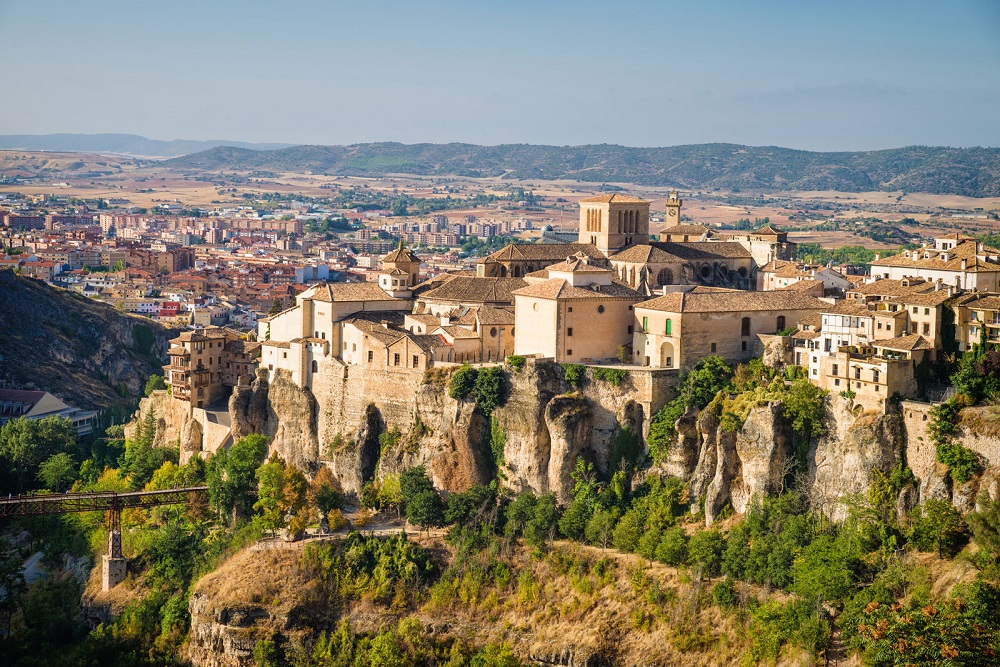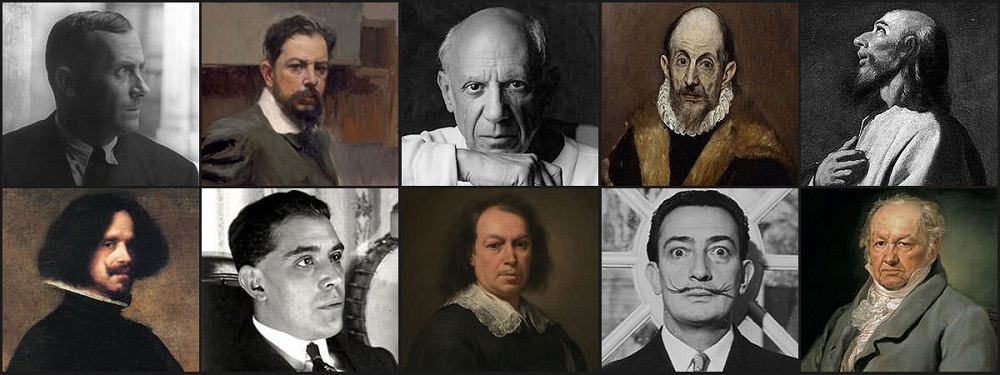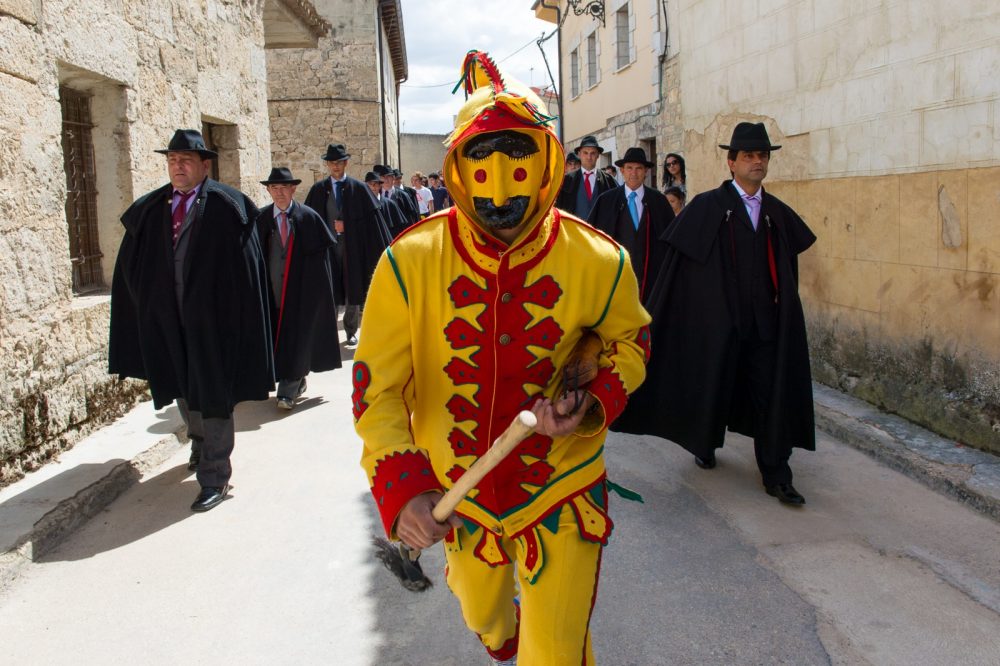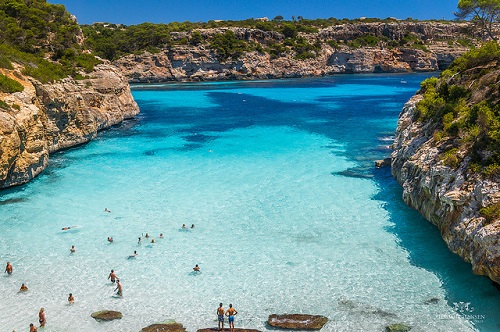Cuenca considered as UNESCO World Heritage City is one of the most magnificent medieval towns in Spain. With its cobblestone lanes, the town square, old mansions, fascinating historic monuments and impressive views Cuenca has wonderfully conserved its old-world character.
Cuenca is situated across a steep spur, whose slopes descend into deep rivers of the Júcar and Huécar gorges. It is divided into two separate towns: the “new” city is situated south-west to the old one which stands above on a mountain. Even so, the city itself merits a visit, and the surrounding areas are full of natural wonders.
For more things to see in this charming city, read our list of the top 9 tourist attractions in Cuenca.
1- Castilla-La Mancha Palaeontology Museum:
via – wikipedia
This region of Spain is home to some impressive museums here is dedicated to showcasing the paleontology of the area.
This museum put together collection covering the dinosaurs as well as information about the ecosystems in which they lived. This museum dates back as far as 125-million years ago, make The Paleontological Museum of Cuenca is home to an imposes collection of fossils from the Castilla-La Mancha region, as well as various exhibits that bring the past to life. The museum’s dinosaur displays are among its most popular, especially with children, featuring finds dug from nearby sites.
Outside the museum, the Paleontological Park is home to the biggest of the replicas, where you can stroll among them on the grass. Along with traces of the earth’s earliest known life in the Paleozoic, Mesozoic, and Cenozoic eras, the museum also features sections devoted to the Miocene and Pleistocene periods, and displays include models of long-extinct species like saber-toothed tigers and woolly rhinoceroses. Areas dedicated to early humans show scenes of Neanderthal hunters and cave dwellings.
2- San Pablo Bridge:
 via- alterra
via- alterra
Another iconic landmark of Cuenca is the iron and wooden bridge of San Pablo, which has ferried people across the gorge for over 100-years. Besides, San Pablo Bridge is one of the most famous, a footbridge originally built in the 16th century to connect San Pablo convent to the old town over the Huécar River. Also, the contemporary bridge was constructed in 1902 of iron and wood, and those who don’t mind heights or a little swaying will enjoy the magnificent views of the Hanging Houses.
3- Science Museum of Castilla La Mancha:
 via – borismicka
via – borismicka
The present building of the science museum is just as impressive as the collection itself. It is considered an excellent family attraction that keeps kids engaged. The museum exhibits various structures associated together to create the space, the Arabian walls and medieval houses used to store the collection build a very distinctive museum, as do many of those in Cuenca.
While the collection will take you around various scientific theories and facts from all over the world, it’s the Planetarium that stands out thanks to the over 6000 projections inside. Furthermore, the museum explores every facet of science, starting with the basics of physics, the “big bang,” and earth sciences like geology, biodiversity, meteorology, weather, and climate. The museum major focus is on climate change and energy, exploring clean energy sources.
Other displays move out of the atmosphere to the satellites that surround us, and beyond our planet to visit the moon, Mars, and more. Various audio-visual exhibits engage the visitors in the exploration of the solar system and even time itself.
4- Plaza Mayor and the Town Hall:
 via – voyagevirtuel
via – voyagevirtuel
Plaza Mayor is flooded with colorful houses, and Cuenca Cathedral dominates the square. With many restaurants and cafes both on the square and the small cobbled streets leading off it, at night the terraces are crowded with people amusing tapas and drinks before heading off for dinner.
The Town Hall, standing at the opening to Plaza Mayor is a special Baroque building that floats on its three-pillared arches. Dating back to 1762, the vivid red and gold decoration of the arches gives the perfect frame to the Plaza.
5- Serranía de Cuenca:
 via – tesorosdecuenca
via – tesorosdecuenca
The national park of Cuenca is large and comprises both of the attractions below. In the park you can hike, walk or ramble throughout a various collection of trees, flowers, plants, and wildlife; it’s exclusively popular for its bird watching.
In Uña, a small town inside the park encompasses lakes reflecting almost mirror-like images, alongside the more bog-like wetlands. A full day out will allow you to make the most of this natural setting while also easily being able to enter the enchanted city.
6- Casas Colgadas (Hanging Houses):
 via – flickr
via – flickr
Casas Colgadas are the most emblematic and popular landmark in Cuenca, are also nominated as a UNESCO World Heritage Site. Besides, these extraordinary medieval buildings were beautifully rebuilt in the early 20th century.
Furthermore, the striking Casas Colgadas of Cuenca are reached via the Calle Obispo Valero, constructed at the edge of a cliff overlooking the Huécar Gorge, which is originally been covered with hanging houses, but only three of them remain. The houses stick precariously to the cliffside with their balconies projecting over the abyss.
7- Museo de Arte Abstracto Español:
 via – turismocastillalamancha
via – turismocastillalamancha
The Museum of Spanish Abstract Art is situated in the Casas Colgadas. Dramatically suspended above a sheer cliff wall, the building has three levels of gravity-defying balconies that stick out over the river gorge. The 15th-century house has been completely modernizing but still reveals the original architectural elements, concluding wooden beam details on the inside.
The museum’s outstanding collection centers on Spanish Abstract paintings and sculptures of the 1950s and 1960s as well as works from the 1980s and 1990s. Besides, the collection includes more than 700 artworks by renowned Spanish abstract artists. Also, visitors are amazed by the uniqueness of the collection along with the variety.
The Museo de Arte Abstracto Español houses the largest collections of modern art in Spain made by Spanish artists after the Museum of Contemporary Art and the Reina Sofia Museum in Madrid.
8 – Catedral de Santa María la Mayor:
 via – commons
via – commons
Catedral de Santa María la Mayor stands proudly on the town’s main square and it dating back to the 12th and 13th centuries. Besides, it is known by the name of Nuestra Señora de Gracia (Our Lady of Grace), which presents a mix of Norman and Gothic architectural details.
The magnificently decorated sanctuary, the high altar by Ventura, the beautiful Renaissance arch, the Arco de Jamete and the unique triforium in the ambulatory are especially noteworthy seeing because they are unlike any other church in Spain. Furthermore, the cathedral exhibits two artistic treasures are the 13th-century Mater Dolorosa by Pedro de Mena in the sacristy and a Crucifixion by Yáñez de la Almedina in the Capilla de Los Caballeros.
Moreover, the Palacio Episcopal (Bishop’s Palace) attached to the cathedral. Besides, the Bishop’s Palace house the Diocesan Museum at the lower floors, which exhibits the cathedral’s exceptional art collection, containing the Christ on the Cross and Prayer in the Garden of Olives paintings by El Greco. Other treasures encompass the 13th-century Byzantine diptych from Mount Athos, exquisite goldsmith’s work, elegantly crafted altarpieces, antique liturgical objects, and valuable tapestries.
9- Semana Santa Museum:
 via – juntacofradiascuenca
via – juntacofradiascuenca
Semana Santa is celebrated jointly with Easter celebrations each year, and Cuenca’s festivities are popular far and wide. During this time, the city comes animated with its festival of religious music, which is marked by not only performances but also a massive parade featuring elaborate floats and costumed performers.
For those who cannot be present at the end of March and early April to enjoy the Festival, the Semana Santa Museum gives them a chance to discover it by way of an immersive audio-visual presentation that showcases the traditional costumes and notable items from the parade’s long history.



 Top 10 Most Famous Spanish Artists and their Arts
Top 10 Most Famous Spanish Artists and their Arts
 El Colacho, the Baby Jumping Festival in Murcia Spain
El Colacho, the Baby Jumping Festival in Murcia Spain
 Discover The Most Beautiful Places In Mallorca, Spain
Discover The Most Beautiful Places In Mallorca, Spain